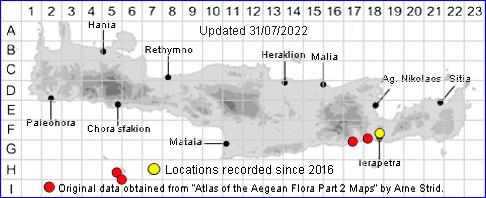
SPECIES DESCRIPTION
CENTAUREA MELITENSIS
Family and Genus:- See- COMPOSITAE
Common Name:- Cockspur star-thistle
Homotypic Synonyms:- Calcitrapa melitensis, Triplocentron melitense.
Meaning:- Centaurea (Gr) Centaur, Centauros. The centaur Chiron was cured of a
hoof wound with this plant.
Melitensis (L) From Malta, Maltese.
General description:- Annual or biennial.
Stem:-
1) Up to 80 cm, erect, winged above, sparingly branched from the middle.
Leaves:-
1) Green, crispate-puberulent, margin scabrid.
a) lower, lanceolate, lyrate-pinnatifid to sinuately lobed.
b) upper, lanceolate.
Flowers:-
1) Capitula, solitary or in groups of 2-3.
2) Involucre, 8-12 mm diam, ovoid-globose.
3) Bracts, glabrous or puberulent, veinless.
4) Appendages, not decurrent, short, with a patent apical spine 5-8 mm and 1-3
remote.
5) Short lateral spines, on each side.
6) Florets, yellow, glandular, the outer patent.
Fruit:-
1) Achenes, c. 2·5 mm.
2) Pappus, as long as achene.
Key features:-
1) Leaves, with arachnoid indumentum or crispate-puberulent and greenish.
2) Florets, glandular.
3) Pappus, as long as the achene.
4) Stem, up to 80 cm.
5) Involucre, glabrous or puberulent.
6) Apical spine, of appendages 5-8 mm.
Habitat:- Open grassy coastal habitats, fallow fields and dry open shrubby
vegetation. 0-100 m.
Distribution:- Not reliably recorded from mainland Greece, confirmed only from the
Milos island Group. Widespread, but scattered in the Mediterranean area. Rare on
Crete, known only from Gavdos and an area around Ierapetra.
Flowering time:- Mid-Apr to mid-June.
Photos by:- Courtesy of Wiki-Commons
